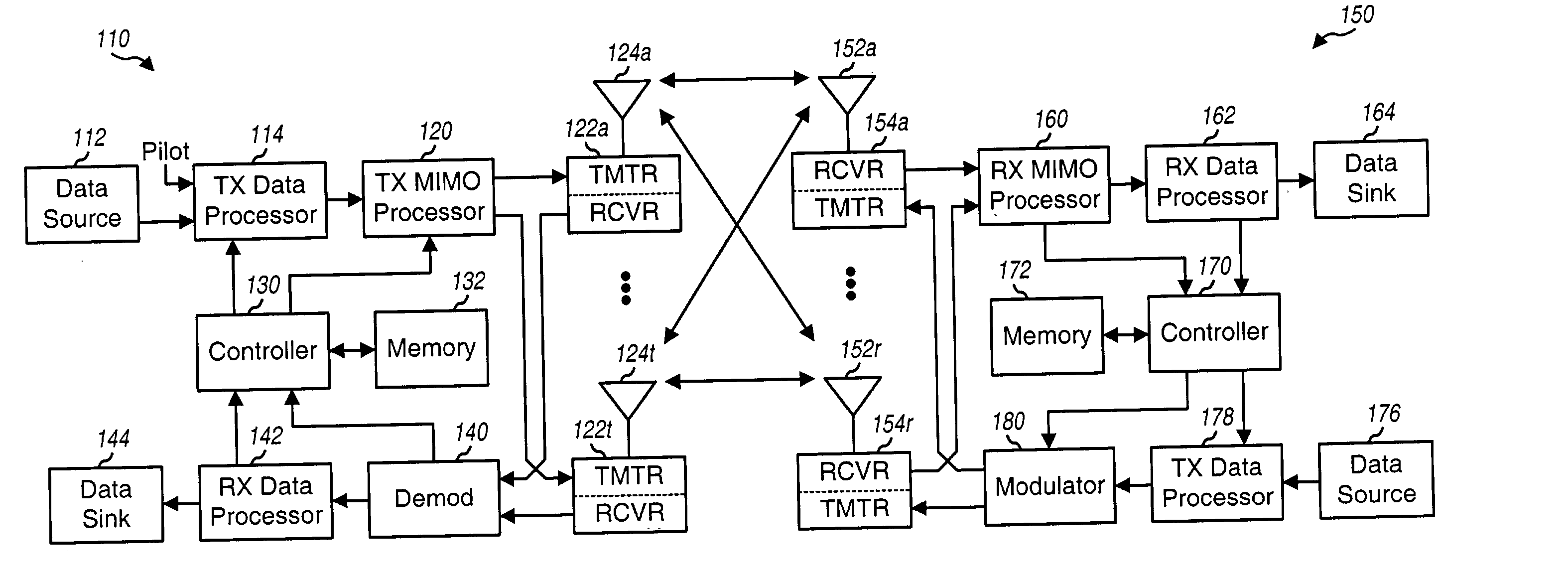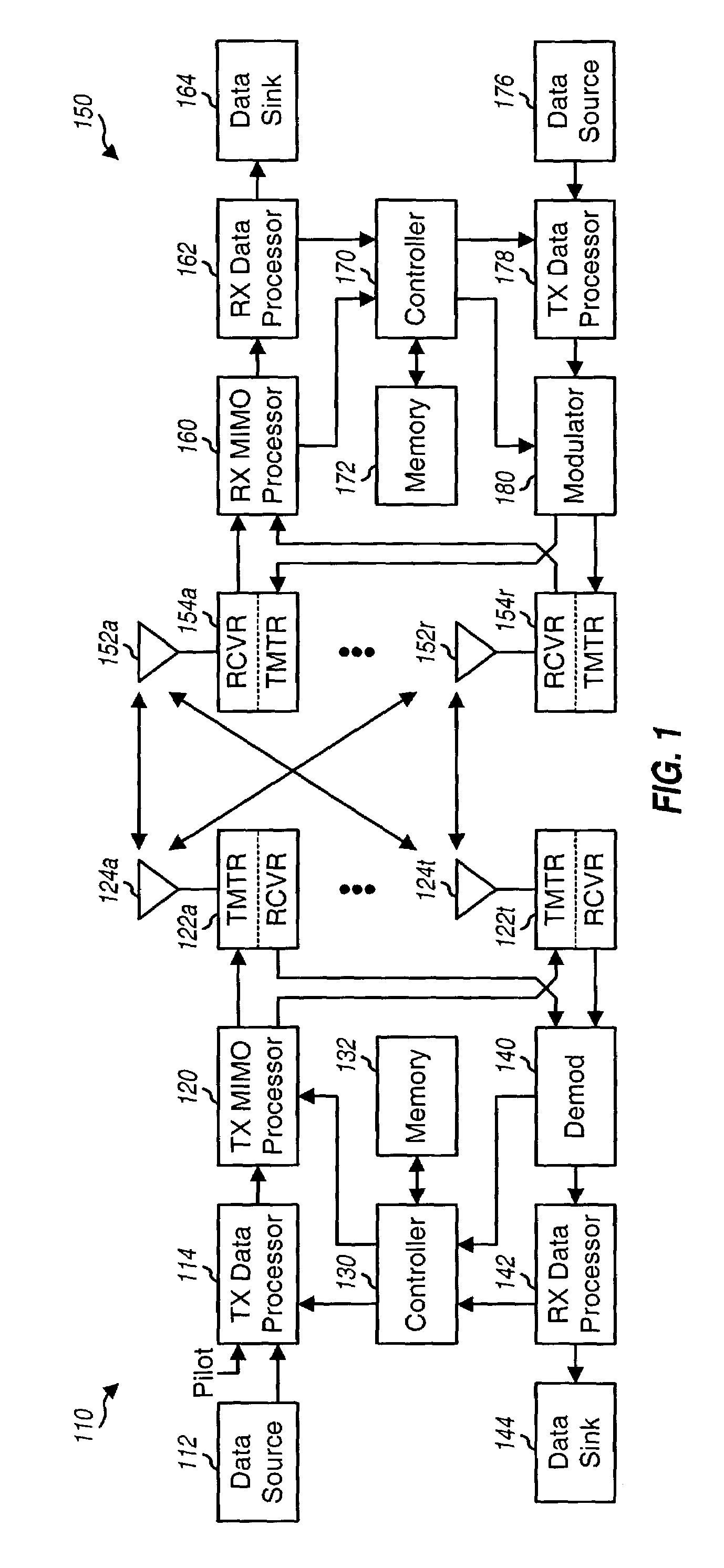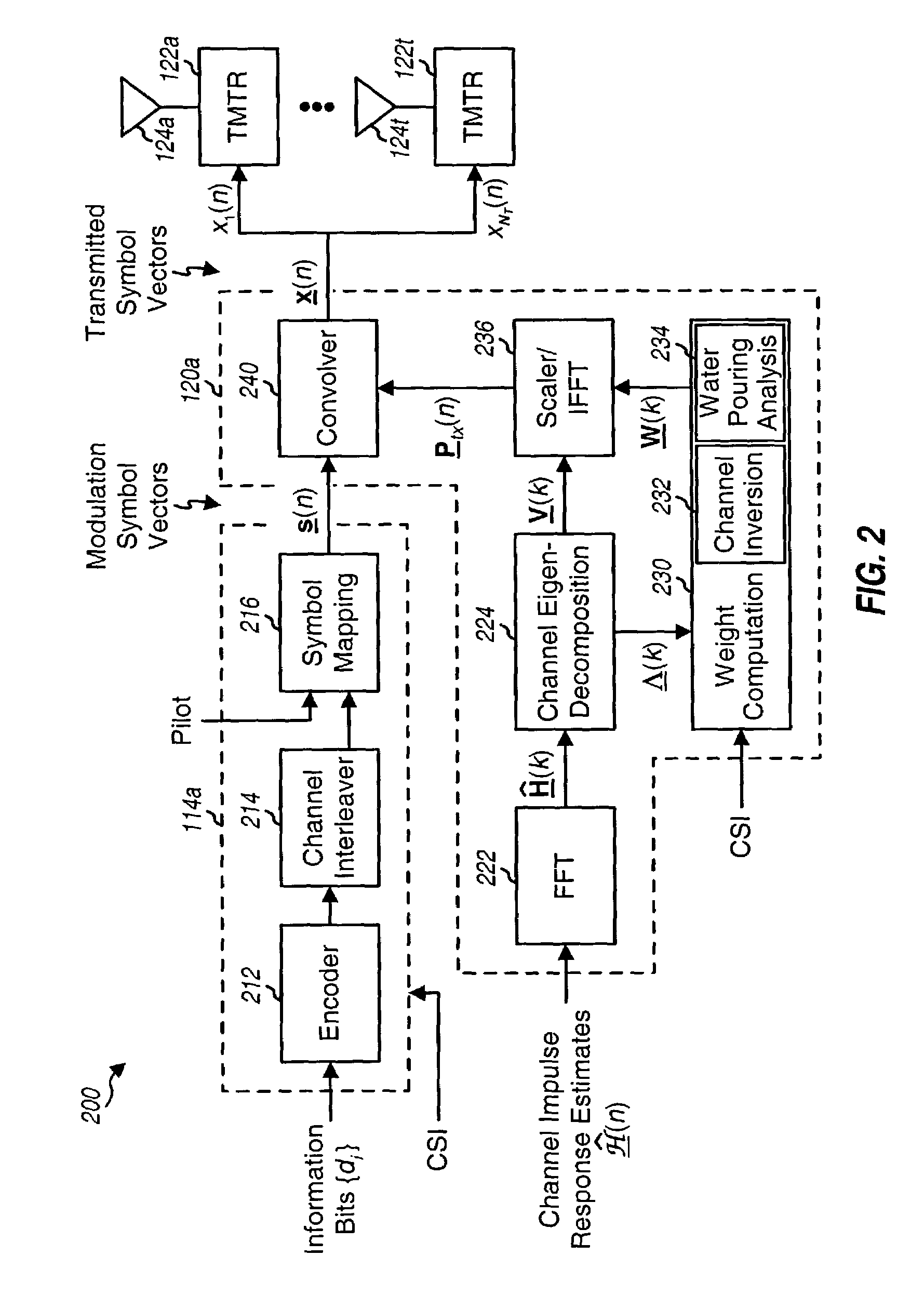Signal processing with channel eigenmode decomposition and channel inversion for MIMO systems
a signal processing and channel inversion technology, applied in the field of data communication, can solve the problems of increasing the complexity of the processing at both the transmitter and the receiver, exaggerating the frequency selective nature of the spatial subchannel, and increasing the coding and decoding delay. achieve the effect of high overall throughput and high performan
- Summary
- Abstract
- Description
- Claims
- Application Information
AI Technical Summary
Benefits of technology
Problems solved by technology
Method used
Image
Examples
Embodiment Construction
[0027]The techniques described herein for processing a data transmission at a transmitter and receiver may be used for various wireless communication systems. For clarity, various aspects and embodiments of the invention are described specifically for a multiple-input multiple-output (MIMO) communication system.
[0028]A MIMO system employs multiple (NT) transmit antennas and multiple (NR) receive antennas for data transmission. A MIMO channel formed by the NT transmit and NR receive antennas may be decomposed into NS independent channels, with NS≦min{NT, NR}. Each of the NS independent channels is also referred to as a spatial subchannel of the MIMO channel. The number of spatial subchannels is determined by the number of eigenmodes for the MIMO channel, which in turn is dependent on a channel response matrix that describes the response between the NT transmit and NR receive antennas.
[0029]FIG. 1 is a block diagram of an embodiment of a transmitter system 110 and a receiver system 15...
PUM
 Login to View More
Login to View More Abstract
Description
Claims
Application Information
 Login to View More
Login to View More - R&D
- Intellectual Property
- Life Sciences
- Materials
- Tech Scout
- Unparalleled Data Quality
- Higher Quality Content
- 60% Fewer Hallucinations
Browse by: Latest US Patents, China's latest patents, Technical Efficacy Thesaurus, Application Domain, Technology Topic, Popular Technical Reports.
© 2025 PatSnap. All rights reserved.Legal|Privacy policy|Modern Slavery Act Transparency Statement|Sitemap|About US| Contact US: help@patsnap.com



